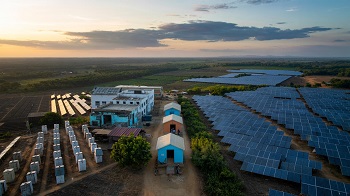The Haryana Electricity Regulatory Commission (HERC) has announced a revision in power tariffs, set to take effect from April 1, 2025.
This change will result in increased electricity rates for both domestic and industrial consumers. The revised tariffs will see an increase of 20 to 30 paise per kilowatt-hour (kWh), impacting household budgets and operational costs for industries.
In this article, we will discuss the revised electricity rates, their impact on consumers, reasons for the tariff hike, and the government’s stance on the new rates.
Revised Electricity Tariffs in Haryana
The latest tariff revision affects different consumption slabs, with noticeable increases for domestic consumers. Here’s a breakdown of the new electricity rates in Haryana:
New Domestic Electricity Rates Effective April 1, 2025
| Consumption Slab (Units) | Old Rate (Rs per kWh) | New Rate (Rs per kWh) | Increase (Rs) |
|---|---|---|---|
| 0-50 units | 2.00 | 2.20 | +0.20 |
| 51-100 units | 2.50 | 2.70 | +0.20 |
| 0-150 units | 2.75 | 2.95 | +0.20 |
| Above 150 units | Variable | Increased | 20-30 paise hike |
The Haryana power tariff revision is expected to impact both low and high electricity consumers, making household budgets tighter.
Impact of the Revised Power Tariffs on Consumers

1. Increased Electricity Bills for Households
Domestic consumers in Haryana will have to pay more for their electricity usage. The increase of 20 to 30 paise per unit means households consuming over 100 units per month will see a noticeable rise in their monthly bills.
2. Higher Costs for Industrial and Commercial Users
Industrial and commercial establishments, which rely heavily on electricity, will also face an increase in their operational costs. This could lead to higher prices for goods and services in the state.
3. Burden on Small-Scale Businesses
Small businesses and retailers may experience financial strain due to increased electricity expenses. Many entrepreneurs rely on electricity for daily operations, and higher tariffs could reduce their profit margins.
4. Effect on Agricultural Consumers
While agricultural power tariffs remain subsidized, the increase in general electricity rates may indirectly impact farmers, especially those who depend on alternative power sources for irrigation and storage facilities.
Why is the Haryana Government Increasing Electricity Tariffs?
The power tariff revision by the Haryana Electricity Regulatory Commission (HERC) is based on several factors:
- Rising Power Purchase Costs: The cost of purchasing electricity from power generation companies has increased, forcing the state to raise tariffs.
- Infrastructure Development: Funds from the increased revenue will be used to upgrade power infrastructure, improve transmission lines, and reduce electricity losses.
- Financial Viability of Power Distribution Companies (Discoms): Haryana’s electricity distribution companies are facing financial stress, and higher tariffs will help in covering operational expenses.
- Encouraging Energy Conservation: Higher tariffs may encourage consumers to use electricity more efficiently and reduce wastage.
Public Reaction to the Electricity Tariff Hike
1. Consumer Backlash Over Higher Rates
Many residents and business owners have expressed dissatisfaction with the revised tariffs, citing increased financial pressure on middle-class families and small businesses.
2. Political Reactions

Opposition parties have criticized the Haryana government’s decision to raise power tariffs, calling it a burden on the common man. Some have demanded a rollback or additional subsidies for lower-income groups.
3. Industry Concerns
Industries operating in Haryana are worried that higher power tariffs may impact their competitiveness, leading to increased production costs and potential job losses.
Ways Consumers Can Reduce Electricity Bills Amid Tariff Hike
With rising electricity costs, consumers can adopt various energy-saving practices to minimize their bills:
- Use Energy-Efficient Appliances: Switch to LED bulbs, energy-saving fans, and inverter-based air conditioners to reduce power consumption.
- Unplug Devices When Not in Use: Many electronic devices consume power even when turned off. Unplugging them can save electricity.
- Optimize Air Conditioner Usage: Set air conditioners at 24°C or higher to save on electricity bills.
- Use Solar Power: Installing solar panels can help households generate their own electricity and reduce dependency on the grid.
- Monitor Power Usage: Keeping track of electricity consumption through smart meters can help consumers manage their usage effectively.
Government’s Stance on the Power Tariff Revision

The Haryana government has defended the electricity tariff hike, stating that it is necessary for maintaining a reliable power supply and improving the financial health of power distribution companies. Officials have also assured that subsidies for economically weaker sections and agricultural consumers will continue to cushion the impact of the hike.
Conclusion
The increase in electricity tariffs in Haryana from April 1, 2025, will affect domestic, industrial, and commercial consumers.
While the hike is aimed at improving power infrastructure and financial sustainability, it is expected to increase household and business expenses. Consumers can adopt energy-efficient practices to mitigate the impact of the tariff revision.
As discussions on electricity rates continue, many will be looking towards the government for relief measures or policy adjustments to ease the financial burden on the public.





